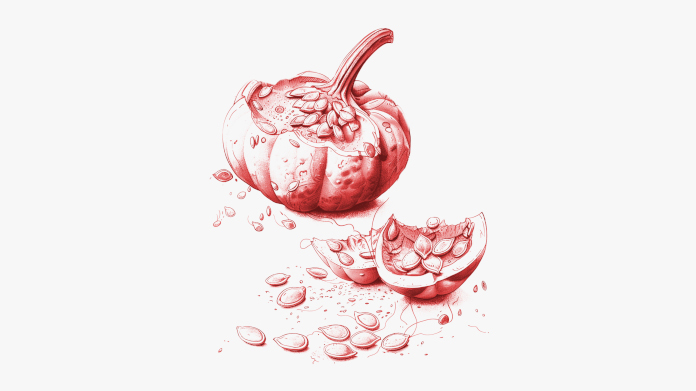Moringa: the ‘miracle plant’ that helps to maintain normal blood sugar levels
‘Miracle tree’, ‘tree of life’, ‘richness of India’ ... A star plant of Ayurvedic medicine used for centuries in India and Africa, moringa continues to surprise us with its high nutritional value and unique properties

Moringa: a plant used for millennia
Originating from Nepal but now found predominantly in the world’s tropical and sub-tropical regions, moringa (Moringa oleifera) is a fast-growing tree capable of withstanding periods of extreme dryness. Numerous parts of the tree are edible, including the roots, leaves, seeds and flowers.
For thousands of years, moringa has been a feature of Ayurveda, India’s traditional system of medicine, which uses phytotherapy, dietetics, aromatherapy, massage and yoga to rebalance the mind and body. According to Ayurvedic tradition, this plant may help to combat more than 300 health problems.
Studies have also shown its extensive use as a medicinal plant in Nigeria (1). In the various world regions where it grows, moringa is also widely used as a seasoning, vegetable or source of plant protein.
A key solution to malnutrition?
For several years now, moringa has been the subject of a growing number of scientific studies, aimed in particular at identifying its nutritional properties.
According to one carried out in 2011, the dried leaves of moringa contain minerals such as calcium, phosphorus, magnesium and potassium. 17 fatty acids have also been identified, α-linolenic acid (44.57%) having the highest value, followed by heneicosanoic acid (14.41%), g-linolenic acid (0.20%), palmitoleic acid (0.17%) and capric acid (0.07%). It also contains proteins, vitamins, β-carotene, amino acids, and various phenol compounds(2).
In fact, for several years, the World Health Organization and the movement Engineers Without Borders have been supporting programmes designed to promote the cultivation of moringa in areas of Africa affected by malnutrition (3-4).
The plant could turn out to be an important resource for the future, not only because of its significant ability to survive dry periods, but also because of its now widely-recognised and exploited nutritional qualities.
Moringa is known to help maintain normal glycaemia
Finally, a number of studies are underway to evaluate moringa’s therapeutic potential. According to one such study: “In addition to its water-purifying powers and high nutritional value, Moringa oleiferais very important for its medicinal value”(5).
Moringa is recognised in particular for helping to maintain normal blood sugar levels(6-7), a property that’s particularly useful over the festive or post-festive period. This is a time when we tend to eat more high-fat, high-sugar foods and consume more alcohol, all of which have a significant effect on our blood sugar levels.
To gain maximum benefit from moringa’s effects, choose a high-quality supplement, made from organically-grown leaves, such as the product Organic Moringa leaf Extract.
References
- G.C. Stevens, K.P. Baiyeri, O. Akinnagbe, Ethno-medicinal and culinary uses of Moringa oleifera Lam ; in Nigeria, Journal of medicinal plants research, 6A27CAA22304 Vol.7(13), pp. 799-804 , April 2013
- Busani Moyo, Patrick J. Masika, Arnold Hugo, Voster Muchenje, Nutritional characterization of Moringa (Moringa oleifera Lam.) leaves, African Journal of Biotechnology Vol. 10(60), pp. 12925-12933, 5 October, 2011, DOI: 10.5897/AJB10.1599
- https://www.who.int/countries/cog/news/plantes_medicinales_sept07/fr/
- https://www.isf-france.org/articles/le-moringa-un-moyen-de-lutte-contre-la-malnutrition-au-togo
- Anwar, F., Latif, S., Ashraf, M. and Gilani, A.H. (2007), Moringa oleifera: a food plant with multiple medicinal uses. Phytother. Res., 21: 17-25. https://doi.org/10.1002/ptr.2023
- C.O. Edoga, O.O. Njoku, E.N. Amadi, J.J. Okeke, Blood sugar lowering effect of moringa oleifera Lam ; in albino rats, International Journal of Science and Technology, Volume 3 n°1, January 2013
- Kumari DJ. 2010. Hypoglycemic effect of Moringa oleifera and Azadirachta indica in type-2 diabetes. Bioscan 5: 211–214.
Keywords
8 Days
Simple and fast.
Simple and fast.
Nina
8 Days
Great product was definitely what is…
Great product was definitely what is says and arrived on without issue
customer
14 Days
I love reading those product facts on…
I love reading those product facts on Supersmart.com. Effective health products making permanent changes to my blood-work results and testes. However, I also have to order capsules from other websites.
NORDGULEN Olav
17 Days
Great products
Great products Very easy to choose, to order… and to get at home
Federica mastrojanni
20 Days
Service rapide et bons produits
Service rapide et bons produits
customer
21 Days
Good products and fast delivery
Good products and fast delivery
Trusted
26 Days
Does what it says on the can
I believe in this product Made to highest standard The ordering process is straightforward Delivery time prompt Excellent product, excellent service Happy customer ❤️
Sheba Kelleher
31 Days
Excellents produits
Excellents produits. Rien à dire si ce n'est qu'ils sont très chèrs.
MJS_France
33 Days
Very good supplement
Very good supplement
Glaveash
34 Days
Supersmart supplements are really…effective
Supersmart supplements are really effective and have helped me and family members and friends to improve their health including some of us with severe health problems including some with no existing medical treatment.
Anne Georget
35 Days
SuperBig Supersmart
SuperBig Supersmart
Pierre
39 Days
I’m very thankful for your clean…
I’m very thankful for your clean products!
ALAKANGAS Tiina
42 Days
Good service
Good product
HEIDARIZOJABAD Manizheh
43 Days
I have been very pleased with your high…
I have been very pleased with your high quality products and the evocative and informative way of presenting and describing them.
TAHKA Jorma
45 Days
Supersmart is an excellent company
Supersmart is an excellent company, offering high quality affordable products, website easy and several languages, and customer support exceeds expectations. Thanks Supersmart!
Paulo Teixeira



